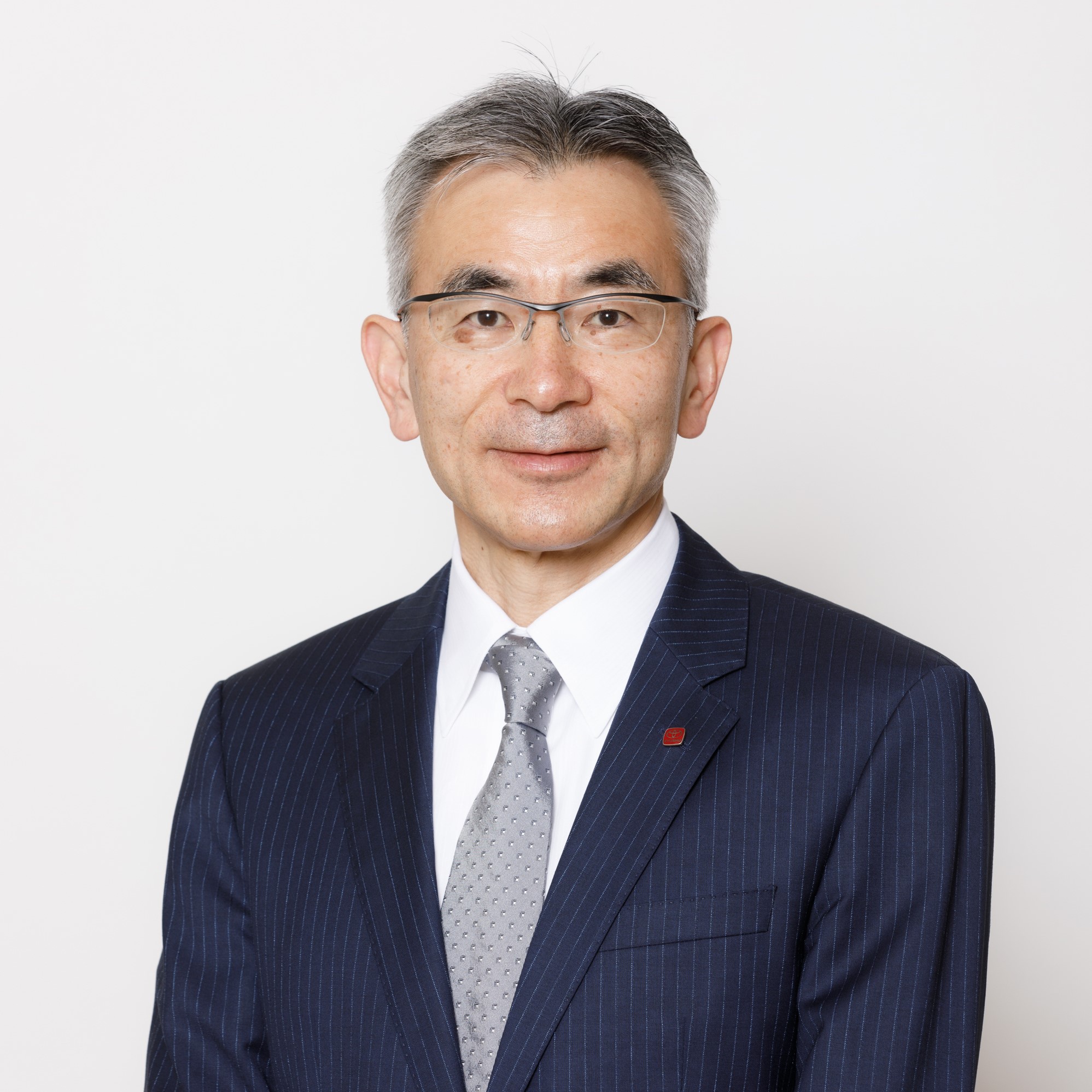The young turns to the learned and the wise for nuggets of wisdom in becoming wiser. The learned and the wise on the other hand, turn to the young to learn from them in their continuous effort to grow. The virtuous cycle of learning is a continuous effort between the young and the wise to evolve whilst learning from each other.
Learning is a core element in any living and evolving organization. As Ken Blanchard, a famous American author wisely put it, “When you stop learning, you stop growing”.
Cross-generational co-learning is a good way to bridging the generational gap and harvesting knowledge from otherwise non-intersecting pockets of information. But it takes a special breed of leaders to enable this to happen.
Atsushi Sugiyama is no stranger to creating conducive environment for better communication and collaboration. Currently serving as the Director and the member of the board of Toyota Motor Kyushu Inc. as well as the CEO of Hello Life, he lives and breathes what he preaches in business and in life: Being consistent in one’s approach to creating a conducive environment for effective communication to happen.

Sugiyama-san is an approachable and personable leader in his company. Image courtesy of Sugiyama-san.
Meeting Sugiyama-san for the first time at his office at Hello Life in Fukuoka city, the Nagaoka Review team members were pleasantly greeted by a friendly and kind gentleman. He skillfully created an atmosphere of openness as he encouraged communication from the young team members of the Nagaoka Review. The team members quickly warmed up to the conversation that took the team down memory lane through the history of Fukuoka to the key to creating psychologically safe environment for people to speak up.
Sugiyama-san is a fatherly figure, kind and open. He is the epitome of a man who walks his talk – someone who has both the skill and genuine interest in creating a great atmosphere to facilitate effective communication.
”The first thing I learned was the importance of listening to my team members
Atsushi SugiyamaDirector, Member of The Board, Toyota Motor Kyushu Inc.
Communication Is Key
The phrase “communication is key” is a well-known phrase iterated by many leaders in the world. Unfortunately, this word of wisdom is one that is easier said than done.
Sugiyama-san believes in the importance of gathering thoughts and ideas from his team members to co-create a new future in the organization and its offering to the society. A major setback he noticed was the ever-glaring “HiPPO” problem, an acronym that stands for “Highest Paid People’s Opinion”.

HiPPO is the acronym that stands for “Highest Paid People’s Opinion”. Image by the author.
In many situations especially in Japan, one would notice that people with the highest salary or senior position are given the priority to speak. “When the bosses speak, the team members tend to nod in agreement”. If not properly addressed, the HiPPO problem would continue to lead to groupthink and indirectly suppress the thoughts, ideas and opinions of other members that might hinder the innovation process.
The biggest question that emerged from this conversation was: How do you change the way people communicate?
“Is It Safe for Me To Speak Up?”
In some cultures, speaking one’s mind or raising questions may be seen as being unwise, and sometimes interpreted as an act of defiance. Underappreciated for one’s effort to speak up, individuals quickly learn ways to stay below the radar to ensure they are in a “safe zone”. The famous Japanese proverb, the nail that sticks out gets hammered (“出る杭は打たれる”) comes to mind.

In some societies, being different is a challenge as people find themselves being ‘hammered” to fit in. Image: Adobe Stock
But what if speaking up is the only way to avoid making a costly mistake in a new business plan?
Sugiyama-san believes in the need to create a psychologically safe and conducive environment for his team members to speak candidly. “The first thing I learned was the importance of listening to my team members”, he chimed. Listening to team members, especially those closest to the end-customers or the problem would give leaders a clearer view of the situation faced instead of the politically correct version. It also helps the leaders to become more empathetic towards the challenges faced by their team members. Leaders could step in and lend their support to achieve solutions.
Sugiyama-san was also quick to note that being genuinely interested is key to achieving honest communication. “Trust takes a long time to build, but it could be lost in an instance. People can tell if you are being genuine or pretending to be.”
Creating a Conducive Environment
When it comes to creating a conducive environment for effective communication, there are many factors at play. The tone of voice, posture, timing, and genuine interest are some examples. But one other aspect is the environment.
“When speaking to my team members, I choose to go to their workspace. I do not like to ask my team members to come to my office. Even though it is just for a quick discussion, doing so might give the team members unnecessary anxiety of being summoned to the office by their superior.”
“When I step into my team member’s territory, the balance of dynamics would shift. They would feel more confident because it is where they belong. At the same time, they would come to appreciate the fact that I am making an effort to have a genuine connection with them.”

Meeting employees at their desk or workspace reduces unnecessary stress. Image: Adobe Stock.
The responsibility lies on the leader to create conducive environment in enabling team members to contribute their thoughts and ideas without the fear of repercussions.
The next question that follows closely would be this: How could organizations benefit from having conducive environment for communication?
"Communication is a tool to achieving goals. Not only would it help to avoid the much-dreaded groupthink, but it would also encourage diversity of thoughts and ideas that is much needed to survive in the fast-evolving business environment."
- Atsushi Sugiyama
Harnessing Strength Through Diversity
Sugiyama-san had the opportunity to be internationally assigned to two dramatically different parts in the United States of America, the West Coast and the East Coast. His time spent in these two locations opened his eyes to the importance of diversity in creating an effective work environment.
“Before I was relocated to the United States, our company enrolled me into a Cross-Cultural Training that opened my eyes to the differences between cultures. It found it very useful, and I believe this training should not only be limited to people on international assignments. Rather, it should be offered to everybody in the company.”

The United States of America is a diverse country. Image licensed from Adobe Stock.
When asked about the reason for advocating the need to increase team members’ cultural intelligence, Sugiyama-san made a clear point on the importance of surviving in business, “As you know, we now live in the VUCA world. To survive in this environment, we need to be agile enough to adapt to changes and come up with new actionable ideas to keep up with the world. We have to even change our business model when the environment changes.”
Sugiyama-san believes that the key to finding new ideas come from a new combination of existing ideas. With many ideas and knowledge existing across the world caught in “pockets” divided by geography, language or culture, it is therefore important to connect people of diverse backgrounds together to collectively discover new learnings. “Diversity is a key ingredient in business survival in the VUCA world”, he added.
However, diversity is a double-edged sword. On one hand it opens a world of knowledge and opportunity, but it also opens to people-related challenges if not well-managed. Sugiyama-san emphasizes on some rules from his modern-day management playbook:
Sugiyama-san’s Modern-Day Management Playbook
“Diversity management will be a difficult journey, but nevertheless an important step in the process of creating sustainability in business and in life”.
“At this point in time, it no longer matters whether you want to accept diversity or not. That ship has sailed. Now it is all about knowing the benefits of diversity and how to harness the potential in bringing positive outcomes to yourself and the people around you.”
“After all, business is all about people.”
The Role of the Leader
Taking the practical approach has always been Sugiyama-san’s method. He believes that leaders should be the one mirroring the right attitude and be the guiding path for team members to learn from. Leading a diverse team is no different.
“At the beginning of the journey, the leader should take the lead by sharing the purpose. Leaders have to orientate their members to come to a common understanding. After that, they should empower their people to make decisions and take the lead in the tasks that has been agreed upon. When challenges or disagreements occur, leaders have to take a step back to listen to their team members and do their best to understand the situation. At this point, leaders must refrain from providing negative feedback, especially if that is their default reaction. This is an important step to creating psychological safety, tying it back to our earlier discussion of ensuring everyone feels safe enough to speak up. However, this is also the most difficult step leaders have to overcome.”
Achieving Business Evolution in Japan
When asked to comment on Japanese leadership and how it differs from the west, he said, “In Japan, giving feedback is not common practice. It is even rarer especially amongst the upper echelons of the organization. Oftentimes feedback is viewed negatively. Regrettably, when someone proposes an idea that differs from that of their leader, some leaders might take offense. At the same time, we cannot expect people to remain objective, especially when strong business culture and emotions collide. Therefore, giving feedback is an art.”

The art of giving feedback is essential in business survivability in the VUCA world. Background image: Adobe Stock.
“In the past 40 to 50 years, the changes in business environment were small. Using the manufacturing industry as an example, we have been utilizing almost the same business model for decades.” In this industry, senior people with long business experience are regarded as treasures. Their long-standing experience used to be the key success factor of the business. However, the world has been evolving at an increasing speed. Such outdated mindset to business continuity must be overhauled. Therefore, diversity and psychological safety will be key driving factors in adopting an agile business mindset.
In Essence
In any living organization, cultivating a growth mindset is essential. To become a learning organization, leaders would bear the responsibility of inspiring their people. Having leaders who can walk the talk would greatly inspire people in the organization to follow in their footsteps.
Sugiyama-san concluded his interview with the Nagaoka Review team by highlighting the importance of communication.
”“We have to learn to become better communicators. Always ASK if you do not know or understand something. When listening, always listen quietly with the genuine intention of understanding another person.”
Atsushi SugiyamaDirector, Member of The Board, Toyota Motor Kyushu Inc.










